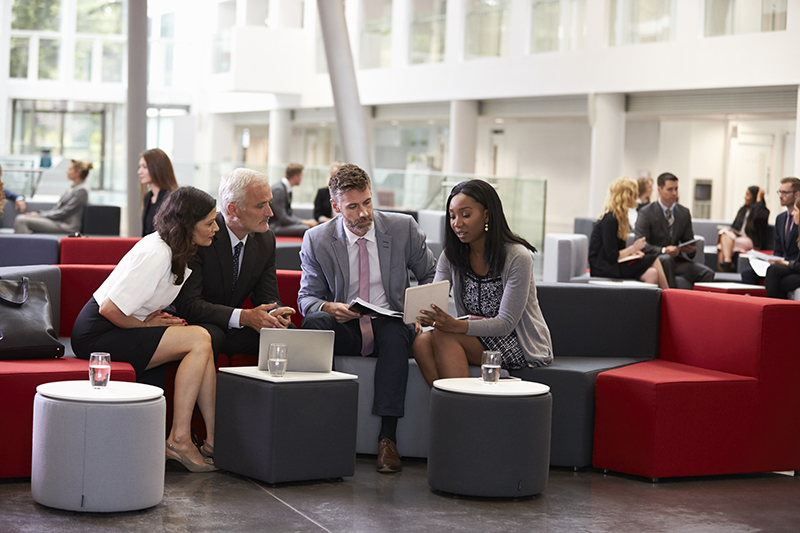Over the past 30 years, chances are that the typical office tenant probably didn’t think much about the office building in which she worked. She entered through the lobby which was most likely empty and quiet, went to her office suite and stayed within the confines of those walls throughout the day, except for lunch at a nearby restaurant or to use the spartan fitness facility in the basement. Then, at the end of the day, she exited through the same hushed lobby and rushed home or to meet friends — somewhere away from the concerns of the office.
Then along came the Silicon Valley entrepreneurs who changed how their employees interacted with the workplace; they provided social opportunities, numerous work rooms and meeting spaces, food, and state-of-the-art amenities, like table tennis and yoga classes, for their employees to enjoy. Offices were now places where people could simultaneously unwind and work hard. Theoretically, with the right environmental incentives, workers would could be happier, healthier and more productive.
This approach began to appeal to companies outside the technology sector. To attract and retain employees, those companies found they needed to provide office space that facilitates social and business interaction and has flexible workspaces with high-quality amenities. Office building owners began to increase their competitive edge by offering programmed activities (e.g., food trucks, concerts, guest speakers, happy hours) in once-dormant common spaces such as lobbies, courtyards and rooftops.
To understand how office building owners were responding to this trend, the NAIOP Research Foundation conducted a survey of NAIOP members in December 2016 as part of a study that resulted in a report titled “Activating Office Building Common Spaces for Competitive Advantage.” In December 2017, NAIOP conducted a follow-up survey among its members to see if the new amenities and programming offered by building owners had gained traction over the past year. The results of the second survey showed little change in responses; those surveyed in 2017 generally answered the questions in the same way as those surveyed in 2016, supporting the findings of the original survey. However, some questions regarding amenities, programming and coworking showed the most change.
Amenities:
- Just over 80 percent of the respondents to each survey believed that “offering more amenities and programming increased leasing velocity.”
- A higher percentage of respondents in 2017 indicated that building owners are offering or planning to offer amenities in the categories of: “coffee/tea in their lobbies;” “yoga and meditation rooms;” “flex space that is shared between tenants;” and “coworking space.”
Coworking:
- 8 percent of respondents in 2017 indicated that building owners were offering or planning to offer coworking, versus 49.6 percent of respondents in 2016.
- One-third of 2017 respondents reported building owners would need to provide coworking facilities to remain competitive, up from one-quarter of respondents in 2016.
Programming:
- More survey participants in 2017 indicated that building owners were offering or planning to offer programming events, such as guest speakers and happy hours, in buildings’ common areas. The multiple choice categories of “fitness classes” and “art installations” had an increased number of selections compared to the 2016 results.
- Almost 60 percent of respondents in 2017 indicated building owners were programming social events in their buildings, up from 46 percent in 2016.














